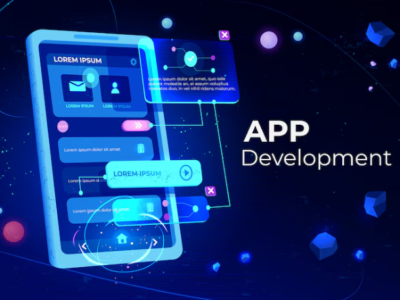
In the rapidly evolving world of mobile app development, businesses often face a critical decision: which framework to use for building cross-platform applications? Two of the most popular frameworks today are Flutter and React Native. Both offer distinct advantages, but selecting the right one depends on various factors, including the type of application, project requirements, and the development team’s expertise.
The Rise of Cross-Platform Development
Cross-platform development has become increasingly popular due to its ability to create applications that work on both iOS and Android without having to write separate codebases. This approach saves time, reduces development costs, and simplifies the maintenance process. Traditionally, native app development required separate teams for each platform, leading to increased project timelines and costs. Cross-platform frameworks like Flutter and React Native solve this issue by allowing developers to write one codebase that runs on multiple platforms.
Overview of Flutter
Flutter, developed by Google, has gained significant traction in recent years. It uses the Dart programming language and boasts a rich set of pre-built widgets that allow developers to create visually stunning and highly interactive applications. Flutter provides excellent performance by compiling directly to native code, giving it an edge over some other frameworks when it comes to speed and responsiveness.
One of the key strengths of Flutter app development company offerings is the ability to create beautiful user interfaces that feel natural on both Android and iOS. The framework’s “hot reload” feature also allows developers to see changes in real-time without losing the current application state, making the development process much faster and more efficient.
Overview of React Native
React Native, backed by Facebook, has been around longer than Flutter and has a vast ecosystem and community support. It leverages JavaScript, one of the most widely-used programming languages, making it accessible to developers already familiar with web development. React Native allows for the development of applications that offer near-native performance while still maintaining a single codebase.
Many enterprises choose React Native development services because of its flexibility and the large community that contributes to its continuous improvement. React Native’s modular architecture allows for smooth integration of third-party plugins and services, making it a preferred choice for companies that require dynamic features and customizations in their apps.
Performance Comparison
When it comes to performance, both Flutter and React Native have their advantages. Flutter’s ability to compile into native ARM code offers excellent performance, especially for graphics-intensive applications. This makes Flutter an excellent choice for applications that need smooth animations or complex visual elements.
React Native, while not as fast as Flutter in terms of rendering, still offers good performance for most use cases. For applications that don’t require heavy graphical elements, React Native can be a more than sufficient solution. Its ability to bridge to native code when needed allows developers to use native components for performance-critical sections of the app.
Development Time and Learning Curve
Development time is another crucial factor when deciding between Flutter and React Native. Flutter’s use of Dart may introduce a slight learning curve for developers unfamiliar with the language. However, once the initial learning phase is over, Flutter’s comprehensive toolkit and reusable widgets can lead to faster development times.
React Native, on the other hand, benefits from JavaScript’s ubiquity. For developers already familiar with JavaScript, learning React Native is straightforward. The framework’s wide array of libraries and plugins further accelerates the development process. This makes React Native an attractive option for teams with existing JavaScript expertise.
UI/UX Capabilities
Flutter shines when it comes to UI/UX design. Its widgets are highly customizable and can mimic the native behavior of both iOS and Android interfaces. For businesses that prioritize a seamless and polished user experience, Flutter is often the go-to choice. The ability to create pixel-perfect designs without worrying about platform differences makes Flutter particularly appealing to designers.
React Native also offers good UI capabilities, but it relies more heavily on native components. This means that while you can achieve a native-like look and feel, there may be some differences between the iOS and Android versions of the app. For companies that want to stick closely to platform-specific guidelines, React Native is a solid option.
Community Support and Ecosystem
Both frameworks have strong community support, but React Native has a slight advantage due to its longer presence in the industry. The vast number of libraries, tools, and plugins available for React Native makes it easier for developers to find solutions to common problems. This mature ecosystem can be particularly helpful for businesses with specific requirements that need readily available solutions.
Flutter is quickly catching up in terms of community support. Its growing popularity has led to the development of a wide array of packages and plugins that extend its capabilities. For companies considering the long-term viability of the technology, Flutter’s rapid adoption suggests a bright future ahead.
Which Framework Should You Choose?
The decision between Flutter and React Native depends on your specific project needs. If your priority is creating a highly customized, visually rich application with top-tier performance, partnering with a Flutter app development company might be the best choice. Flutter excels in projects where design and UI/UX are critical factors, and it can deliver near-native performance, particularly for graphics-heavy applications.
On the other hand, if you need to leverage an extensive ecosystem of libraries and third-party integrations, and you’re working with a team already familiar with JavaScript, React Native development services might be the more practical option. React Native is particularly suited for businesses looking for rapid development with a focus on efficiency and flexibility.
Conclusion
Both Flutter and React Native are powerful frameworks that offer unique benefits for cross-platform app development. The choice between the two should be guided by your project’s specific requirements, your team’s expertise, and the type of application you’re looking to build. Whether you opt for Flutter’s stunning UI capabilities or React Native’s mature ecosystem, both frameworks are capable of delivering exceptional mobile experiences.










